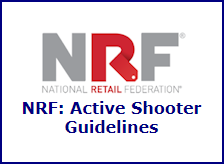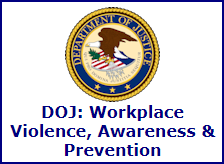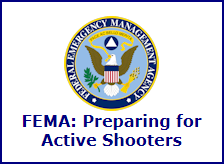Workplace violence: Who is at highest risk and what steps to take
Violence of threat or violence has become more common in today’s workplaces. It includes violence against workers that can be brought by employees, customers, family members of employees, etc.
About 2 million workers are victims of workplace violence each year. It can strike anywhere and no one is immune. Some occupations/businesses carry a greater risk than others. Following are the categories identified by the Occupational Safety and Health Administration as those at increased risk and more vulnerable.
Do you work in a high-risk category?
-
Workers who deal with money with the public
-
Workers who deliver passengers, goods, services
-
Those who work alone or in small groups
-
Those who work late hours, at night and early morning
-
Those who work in high-crime areas
-
Workers in health care, social services and others who have extensive contact in community settings or homes
-
Community workers like gas, water, electric representatives, cable, phone, installers, etc.
-
Letter carriers
-
Retail workers
-
Taxi drivers
Workplace violence can occur inside or outside the workplace and can range from verbal abuse to physical assaults and homicide. Homicide is one of the leading causes of job-related deaths.
What can employers do to help protect employees?
-
Establish a zero-tolerance policy including actions against or by their employees.
-
Ensure all employees know and understand the policy.
-
Ensure all claims of workplace violence are taken seriously and investigated promptly.
-
Provide training for all employees on the policy and emphasize what conduct is acceptable and unacceptable.
-
As much as possible, ensure employees are not traveling alone, especially at night or in unfamiliar locations.
-
Limit the amount of money kept on premises and how much employees carry on the job.
-
Secure parking lots and garages where employees park.
-
Have a safety and security plan that includes all locations and workers.
-
Establish status check-in plans for employees working in the field.
-
Equip field employees with cell phones and hand-held alarms or noise devices.
-
Ensure all company vehicles used by employees are kept in a safe place and maintained properly.
-
Provide escorts to employees when they are working at night or in dangerous situations.
-
Install and maintain video surveillance, extra lighting and alarm systems.
-
Limit outsiders to work areas.
-
Use identification badges or electronic keys for entrance into buildings.
-
Provide security guards.
-
Report any incidents to the police or other appropriate law enforcement agencies.
What can employees do to protect themselves?
-
Be alert to recognize, avoid or diffuse potentially violent situations.
-
Attend all safety training offered.
-
Report to supervisor or manager any concerns or suspicions regarding safety or security of yourself or others.
-
When working during night-time hours, be cautious when walking alone to garages or other locations.
-
Establish a “buddy system.”
The culture within an organization for workplace safety begins at the top. Regular training and education is important for all staff members. Job safety is everyone’s responsibility. It makes people feel safe when a partnership is in place focused on safety and security.
Safe environments foster greater job retention, harness the power of diversity and result in greater success for the company and its employees.
Article originally published on oshatoday.com









